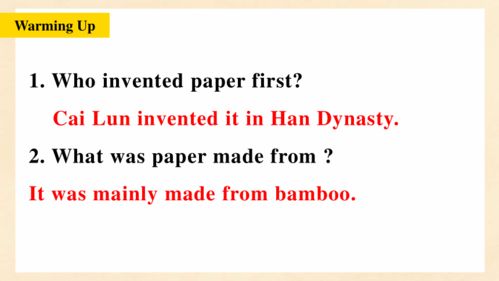The Future of Textile Design:Embracing Sustainability and Innovation
The future of textile design is poised to revolutionize with the integration of sustainability and innovation. As demand for eco-friendly materials continues to rise, designers are embracing new techniques that prioritize environmental responsibility without compromising on style or quality. This shift towards sustainable practices includes using renewable resources such as organic cotton, recycled polyester, and biodegradable fabrics. Additionally, innovative technologies like 3D printing and digital printing are allowing designers to produce complex patterns and designs more quickly and efficiently. The result is a vibrant and diverse range of textile products that are not only stylish but also contribute to a healthier planet.
In the realm of textile design, innovation is not just about crafting new patterns or materials; it's about creating a future that's both sustainable and inclusive. As we look to the horizon, textile designers are pushing boundaries, embracing sustainability, and redefining what it means to create something truly beautiful. In this article, we will explore the latest trends in textile design, highlight some successful cases, and discuss how these principles can be applied to create a more sustainable future.
Sustainability has become an increasingly important consideration in the textile industry. Traditional methods of production have been criticized for their environmental impact, from the use of toxic chemicals to deforestation for raw materials. To address these issues, designers are turning to innovative solutions such as biodegradable fibers, recycled materials, and energy-efficient processes. By embracing these practices, designers can create products that not only look great but also contribute to a healthier planet.
One example of this is the use of organic cotton. Organic cotton is grown without the use of synthetic pesticides or fertilizers, which reduces its carbon footprint and helps protect the environment. Another example is the use of recycled polyester, which is derived from plastic waste and reduces the need for virgin polyester production. Both of these examples demonstrate how designers can incorporate sustainability into their work while still producing high-quality products.

Another area where textile designers are making significant strides is in creating eco-friendly materials. Many designers are experimenting with natural fibers like hemp, bamboo, and Tencel, which are not only sustainable but also have unique properties that make them ideal for specific applications. For example, Tencel, a wood pulp-based material, is lightweight and breathable, making it perfect for outdoor clothing.
As technology continues to advance, designers are exploring new ways to produce textiles that are both stylish and functional. One such approach is the use of smart textiles, which can be controlled through electronic interfaces. For example, smart fabrics can change color based on temperature or humidity, providing users with a personalized experience. Additionally, some designers are experimenting with using 3D printing technology to create intricate designs that would be impossible to achieve with traditional methods. These technologies offer endless possibilities for creating unique and sustainable textiles that meet the needs of modern consumers.
In addition to these technological advancements, designers are also focusing on creating products that are inclusive and accessible. This means designing for people with disabilities, promoting diversity in fashion, and ensuring that all styles are available to everyone. By doing so, designers can create a more equitable and inclusive world, where everyone can feel confident in their style and express themselves freely.
To summarize, textile designers are at the forefront of a revolution in sustainability and innovation. By embracing sustainable materials, incorporating eco-friendly practices, and exploring new technologies, designers are creating products that are not only beautiful but also good for the planet. As we move forward into the future, it's clear that textile design will continue to evolve and adapt to meet the changing needs of society. So let's embrace this future with open arms and create something truly special together.
宜家纺织品设计理念概述
宜家作为全球知名的家居用品零售商,其纺织品设计理念深受消费者喜爱,宜家纺织品在设计过程中注重舒适性、实用性、环保性和时尚性,旨在为消费者提供高品质、多样化的家居纺织品。

宜家纺织品设计理念的具体表现
-
舒适性:宜家纺织品在设计过程中始终以消费者的舒适体验为出发点,通过深入了解消费者的需求和喜好,宜家纺织品注重材质的选择和工艺的精湛,确保产品能够满足消费者的各种需求,如透气性好、吸湿性强、柔软舒适等。
-
实用性:宜家纺织品在设计过程中注重产品的实用性,以满足消费者的实际生活需求,在卧室用品方面,宜家提供了各种床单、毛巾、枕头套等,既美观又实用,能够满足消费者的睡眠需求,在厨房用品方面,宜家提供了各种餐具、毛巾等,方便消费者进行日常清洁和烹饪。
-
环保性:随着环保意识的不断提高,宜家纺织品在设计过程中注重环保性,宜家采用了环保材料和工艺,尽可能减少产品的生产过程中的环境污染和资源浪费,宜家还注重产品的回收和再利用,以实现可持续发展。
-
时尚性:宜家纺织品在设计过程中注重时尚元素的运用,以满足消费者的审美需求,宜家通过不断推出新的款式和颜色,以及与时尚品牌合作等方式,不断丰富产品的时尚元素,满足消费者的审美需求。
宜家纺织品设计理念的案例分析
以宜家的某款床上用品为例,详细说明其设计理念的应用,这款床上用品采用了柔软舒适的材质,具有吸湿性强、透气性好等特点,在设计中,宜家注重了材质的选择和工艺的精湛,同时融入了时尚元素,使得这款床上用品既美观又实用。

-
材料选择:宜家选择了高品质的棉质材料作为主要材料,同时采用了环保的再生纤维材料进行辅助,这种材料不仅具有良好的吸湿性和透气性,而且环保无污染,符合宜家对环保性的追求。
-
工艺精湛:宜家的工艺团队经过精心设计和制作,使得这款床上用品的每一个细节都达到了极致,从面料的选择到缝制工艺的精湛,都体现了宜家对产品质量的严格把控。
-
时尚元素运用:宜家通过与时尚品牌合作等方式,不断丰富产品的时尚元素,这款床上用品的设计中融入了简约时尚的线条和色彩搭配,使得这款产品既美观又符合现代消费者的审美需求。
宜家纺织品设计理念的未来展望
随着消费者对家居纺织品需求的不断提高,宜家纺织品设计理念也将不断创新和发展,宜家将继续注重舒适性、实用性、环保性和时尚性等方面的表现,推出更多高品质、多样化的家居纺织品,宜家还将注重产品的可持续性和环保性,实现可持续发展和绿色生产。
Articles related to the knowledge points of this article:
Job Opportunities at Jieyang Textile Factory A Global Talent Landing Pad
The Unparalleled Luxury of 腾翔印花纺织品
Understanding Color in Textiles:A Comprehensive Guide
Embracing Innovation in Textiles:The Story of Jinde Noble Textiles
Exploring the Rich Tapestry of Textiles from Nantong Mei Nián Hua
The Dynamic World of Foreign Trade Textiles and their Fabric Characteristics



